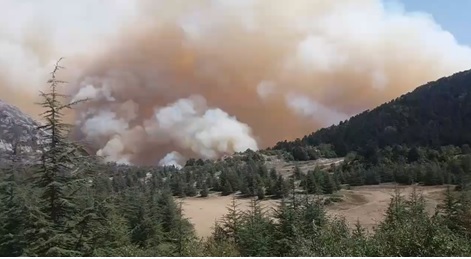
The Syrian Society for the Conservation of Wildlife urgently prepares a concise working paper for the rehabilitation of burnt forests and presents it to the responsible authorities
Damascus September 13 2020
During the last fortnight, several sites of natural forests in the Syrian coastal mountains have been subjected to several fires that have caused the destruction of large areas of our natural national forests. These sites are among the richest spots in biological diversity and harbour several sites that were recognised as Key Biodiversity Areas (KBAs) or Important Bird and Biodiversity Areas (IBAs) and they are amongst the most important habitats in which different forms of wildlife can be found and live in. This catastrophe will have long-term effects on humans and the environment if it is not rehabilitated in the correct and appropriate way..
From this point, the Syrian Society for the Conservation of Wildlife (SSCW) discussed this topic through its members whom have a wide range of experience, knowledge and competence in various fields and subjects including the protecting wildlife, environment, natural forests, Protected Areas, various habitats and soil conservation, in addition to habitat and forest management and environmental legislation and cooperation. Previous experiences and lessons learned from national, regional and global experiences were also used to benefit from the positives and avoid negatives in a way that fits the special case of our national forests with their distinctive geographical features. The dialogue and discussion between its members from various Syrian governorates and even those who are by the nature of their work outside the homeland to develop a scientific, practical and realistic vision that eases and guarantees the smooth rehabilitation of forests that were burnt in general. The main contents of the concept note were formulated in a simple and focused manner for submission to the responsible authorities to be adopted or used as needed.
We would like to confirm that the Society is willing and ready to respond to any dialogue that puts whatever experience it has in serving the national interest and our forests. So that when the first rehabilitation steps is being initiated, consultations will be made to develop rehabilitation solutions and follow up steps according to each forest type and individual site and in a way that suits its previous, climax and natural situation in general.
The following link is to present this paper (in Arabic) connecting those wishing to view the paper presented by the association on the main concepts and ideas for rehabilitating burned forests in general
